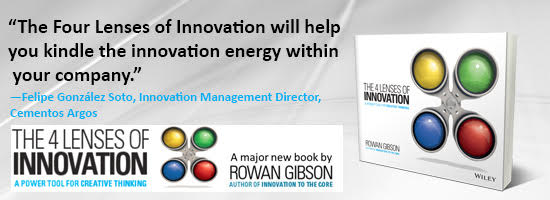Creating Product Line Roadmaps
 My last post was on the topic of product roadmaps. A roadmap is a valuable collaboration and planning tool for product teams and organizations. But, not all products stand alone. Many are part of a product line. This begs the question of how roadmaps should be created for product lines.
My last post was on the topic of product roadmaps. A roadmap is a valuable collaboration and planning tool for product teams and organizations. But, not all products stand alone. Many are part of a product line. This begs the question of how roadmaps should be created for product lines.
To explore this topic, I turned Paul O’Connor, who has made this subject the focus of his work. He is the founder and managing director of The Adept Group and he has had a significant impact on the field of new product development over the past thirty years.
In this interview, we discussed four topics:
- What is a product line and a product line strategy,
- How are platforms related to product lines,
- How product line roadmaps differ from product roadmaps, and
- Why product line roadmapping is important.
Below is a summary of questions discussed followed by a link to the interview.
What is a product line?
Everybody is very familiar with a single product. A line of products has a common thread of several products that share at least one platform. Multiple product lines could create a product family. As an example, look at the Samsung brand. It’s a company that uses its brand across many different product families. They have insurance products, software products, industrial products, and more. I know them for their consumer product family, with televisions and cell phones, and so forth. Each one of those areas, cell phones for example, is a product line, and you would find within each one of those product lines, one or more platforms. What we look for in product line strategy is employing the dynamics of innovation and all aspects of business and all aspects of product management, across the product line.
How are platforms related to product lines?
A platform brings what I would call leverage, to the product line. The visual that I typically use is of a triangle with a plank on top of it like a teeter totter. It conveys the notion of getting leverage in the product line. There are different types of platforms. There can be what we call design platforms. An engineering design platform for a computer could be the motherboard. That same motherboard can be used on a whole series of different computers within a product line. Software can be a platform. We also have production asset platforms that provide leverage. Service platforms are quite interesting to look at, such as in the banking and insurance industries. The value of the platform can only come about if the organization is structured in such a way that creates leverage. By leverage we mean, if I put a dollar into it, I’m going to get two dollars out of it. It means I can do things faster on the platform than starting from scratch each time. This is where we get a little bit confused in our own product development efforts over the years. Most all innovation and product development efforts focus on a single product, one at a time, without the relevance of a platform and without the relevance of product line strategies. Instead, most of the innovation has to go into the platform, or a set of platforms, for a product line. When we do multigenerational planning of a product line, what we’re doing is laying out how the platforms will morph and evolve over time. This gives us another dynamic in our product line strategy that is much more powerful than just trying to innovate one thing at a time.
How is product line roadmapping different from product roadmapping?
One thing that all these roadmaps have in common is a timeline. You can think of it visually as going left to right – a Gantt chart. Usually, that’s all about what is in development — we call these products in development. Oftentimes we’ll even hear people say that their launch schedule is their product line roadmap, which is fine, but it’s not really the whole of what’s going on. What we’re also interested in are the moves in strategy. Are you shifting out a platform, are you going to create a new platform, or are you going to retire a platform? How many platforms do you have? What are the building blocks? Insomuch as we change segments, shift out where we want to go with segments, emphasize different segments, shift out platforms, change platforms and make moves with respect to our platforms, with new technologies and new building blocks — that becomes the whole of what the product line roadmap is all about. There is a fundamental tool we use in product line roadmapping, product innovation charters. PICs were started by Merle Crawford, years ago. What he was able to show in some of his early research was if we have a knowledge of where we want to get to with an innovation, there’s a much greater likelihood that we’re going to reach it with a PIC. Now, whether the PIC is to extend a platform or create a platform, reform a platform, these are the important parts of the discussion for the product line team and what they want to do. What we’re trying to do in the product line roadmap is visualize the product line strategy.
 Listen to the interview with Paul on the Everyday Innovator Podcast.
Listen to the interview with Paul on the Everyday Innovator Podcast.
image credit:Â depositphotos.com
Wait! Before you go…
Choose how you want the latest innovation content delivered to you:
- Daily — RSS Feed — Email — Twitter — Facebook — Linkedin Today
- Weekly — Email Newsletter — Free Magazine — Linkedin Group
 Chad McAllister, PhD is a product innovation guide, innovation management educator, and recovering engineer. He leads Product Innovation Educators, which trains product managers to create products customers love. He also hosts The Everyday Innovator weekly podcast, sharing knowledge from innovation thought leaders and practitioners. Follow @ChadMcAllister
Chad McAllister, PhD is a product innovation guide, innovation management educator, and recovering engineer. He leads Product Innovation Educators, which trains product managers to create products customers love. He also hosts The Everyday Innovator weekly podcast, sharing knowledge from innovation thought leaders and practitioners. Follow @ChadMcAllister
NEVER MISS ANOTHER NEWSLETTER!
LATEST BLOGS
Three things you didn’t know about credit cards
Photo by Ales Nesetril on Unsplash Many of us use credit cards regularly. From using them for everyday purchases to…
Read MoreFive CV skills of a business-minded individual
Photo by Scott Graham on Unsplash The skills listed on a CV help employers quickly understand your suitability for a…
Read More


